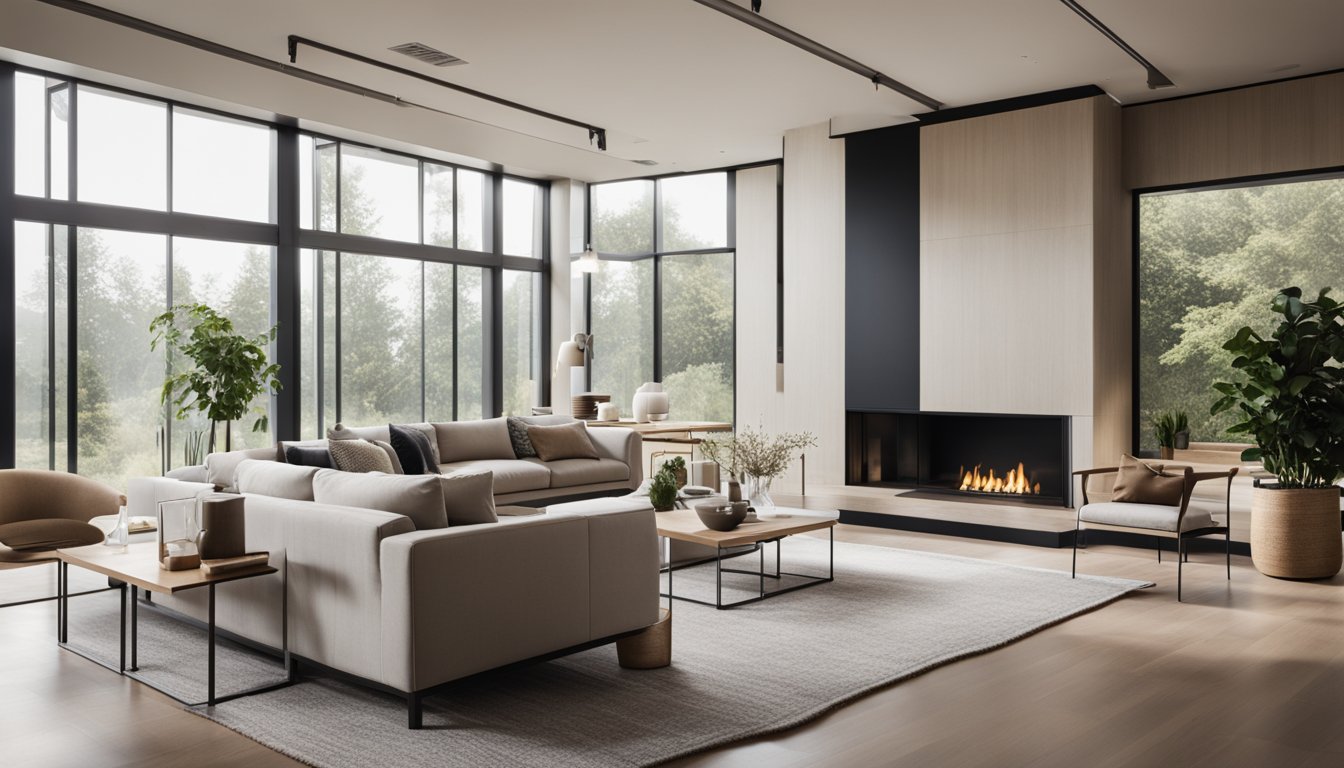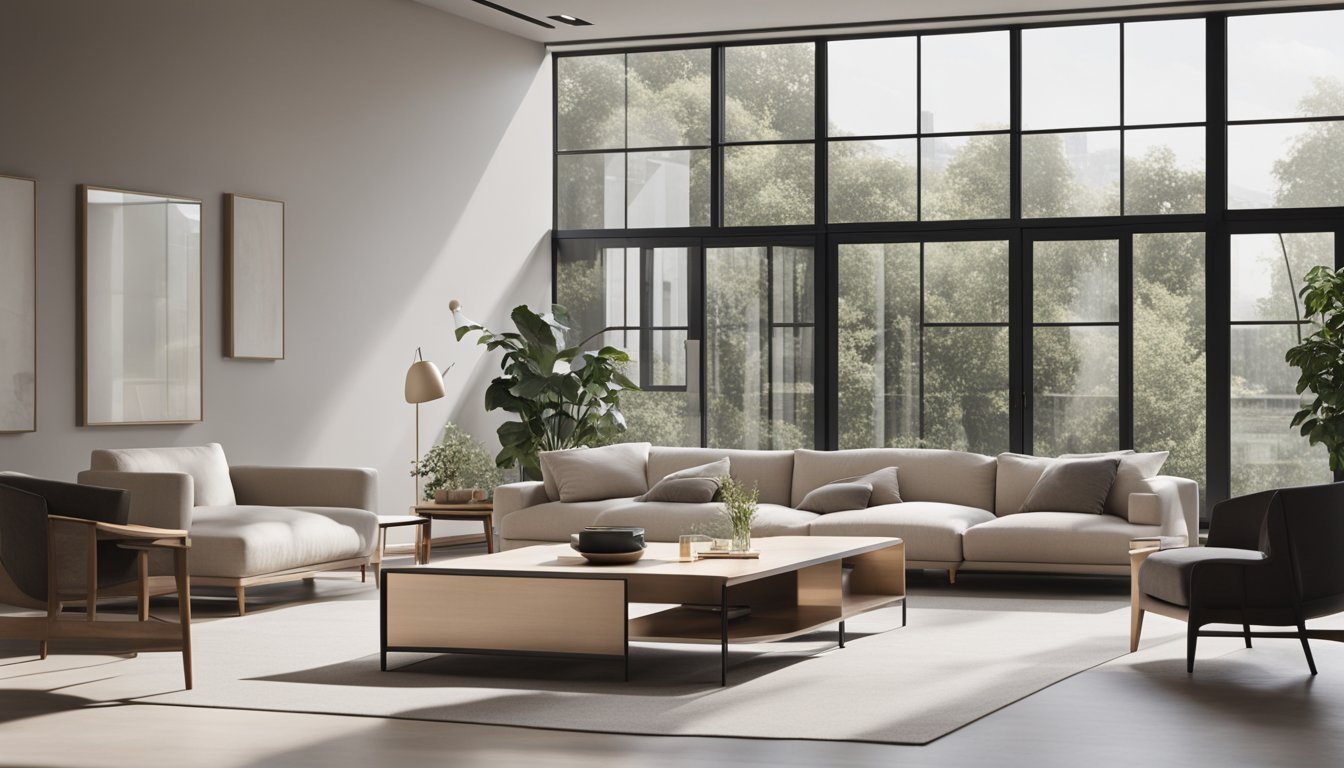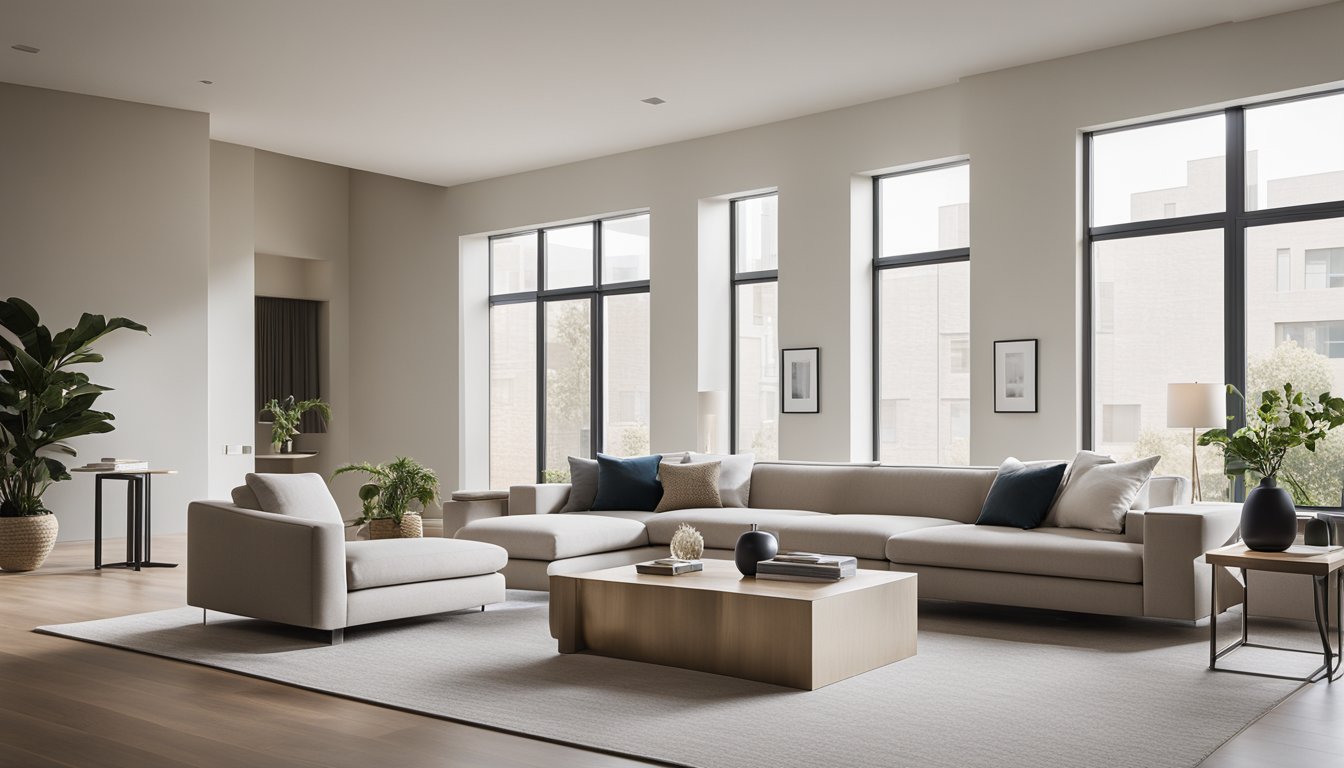Late updated: 11 Aug 2024 13:08
Written by: Daniel Harper
Latest Minimalist Home Design Ideas: Transform Your Space with Simple Elegance
Minimalist home design continues to capture the imaginations of homeowners worldwide. By emphasising simplicity and space, it brings a sense of peace and clarity to living environments. Whether you're redesigning a bustling family room or a serene bedroom, minimalist design principles can dramatically enhance the character and functionality of your space.

Our journey into the latest minimalist home design ideas explores how fewer items can lead to a clutter-free, aesthetically pleasing home. From mixing wood finishes to choosing high-quality furniture with clean lines, every detail contributes to a minimalist haven. These design choices not only clear the clutter but also provide room for creativity and personal expression.
As we delve into room-specific concepts, we will highlight practical tips for maintaining a streamlined look. Keeping the essentials while adding personal touches, like a gallery wall or unique furniture pieces, can reinvigorate any space. By integrating these simple yet impactful ideas, we can transform our homes into refined, minimalist sanctuaries.
Key Takeaways
- Minimalist design principles enhance space and character.
- Clutter-free spaces use high-quality furniture with clean lines.
- Personal touches can maintain simplicity and add unique character.
Design Principles of Minimalism
In minimalist interior design, the focus is on simplicity, functionality, and the judicious use of space and materials. We maximise natural light, use colours and textures thoughtfully, and carefully select furniture and decor to maintain an uncluttered environment.
Embracing Space and Natural Light
One of the cornerstones of minimalist design is space. Minimalist spaces often feature open floor plans with large, uncluttered areas. By reducing visual clutter, we create an environment that feels calm and orderly.
Natural light is another key element. Incorporating large windows, skylights, and glass doors can flood a room with natural light, enhancing the perception of space. Lighter colours in the interior can reflect light effectively, making spaces appear even larger and more welcoming.
Minimalist design also takes into account clean lines and shapes. Architectural features like straight edges, flat surfaces, and right angles help maintain a streamlined look. This simplicity ensures that every element in the room has a purpose and contributes to the overall design.
The Role of Colour and Texture
When it comes to colour, minimalist design typically favours a neutral palette. Whites, greys, beiges, and similar tones form the backdrop, creating a serene and cohesive look. These colours not only contribute to a tranquil atmosphere but also allow other design elements to stand out.
Textures play a crucial role in adding depth and interest. Incorporating different textures, such as matte walls, polished floors, and soft fabrics, can break the monotony of a neutral colour scheme. We might use a single bold colour as an accent to create focal points. This approach keeps the design visually stimulating without overwhelming the senses.
Furniture and Decor Selection
Selecting the right furniture and decor is vital in minimalist design. We prefer pieces with simple shapes and clean lines to maintain a tidy appearance. Multi-functional furniture can help save space and reduce clutter, like a bed with built-in storage or a coffee table with hidden compartments.
Quality over quantity is a guiding principle. Each piece should be chosen for its functionality and aesthetic appeal. Decor is often minimal but purposeful, using a few well-chosen items rather than many small accents.
We also consider scale and symmetry. Larger pieces should fit the space appropriately, and a balanced arrangement can create harmony within the room. This careful selection ensures that every element complements the other, forming a cohesive and inviting minimalist interior.
Room-Specific Minimalist Concepts

Exploring minimalist home design can transform any space into a tranquil sanctuary. From curated décor to smart storage, these concepts help create serene and functional areas.
The Minimalist Living Room
A minimalist living room focuses on simplicity and functionality. We recommend using a restrained colour palette with shades of white, grey, and earthy tones to create a calming atmosphere. Low-slung furniture with clean lines adds a modern touch and keeps the room looking spacious.
Polished concrete flooring paired with a cozy rug can soften the minimalist look and add warmth. Green plants bring in a natural element that enlivens the space. Opt for a simple coffee table that doubles as storage to maintain the clutter-free essence of minimalism.
Innovative Storage Solutions
Proper storage is essential in maintaining a minimalist home. For living areas, built-in shelving units can keep essentials within reach without overwhelming the space. In the kitchen, an island with hidden compartments helps keep counters clear.
In bedrooms, under-bed storage is ideal for extra linens and off-season clothing. Floating shelves are not only practical but also add visual interest without taking up floor space. Multi-purpose furniture, such as ottomans with storage, can help keep rooms tidy while serving multiple functions.
Guest Suite Design with Minimalist Aesthetics
Creating a minimalist guest suite ensures a relaxing stay for visitors. Start with comfortable yet simple furnishings, such as a sleek bed frame and a pair of streamlined bedside tables. A muted colour palette encourages a sense of calm, while touches of natural materials like wood or linen add warmth.
Effective storage is crucial in a guest suite. A compact wardrobe unit and under-bed drawers are practical solutions. Keep decorative objects minimal and deliberate—think of a few books and a couple of thoughtful trinkets. The goal is to make the space functional without unnecessary clutter.
Frequently Asked Questions

Our aim is to provide clarity on essential aspects of minimalist home design. From small living spaces to emerging trends and cost-effective strategies, we address common concerns and offer practical advice.
How can one achieve a minimalist interior in a small living space?
Maximising a small living space involves careful furniture selection and storage solutions. Opt for multifunctional furniture such as sofa beds or nesting tables. Additionally, maintaining a neutral colour palette and using mirrors can create the illusion of a larger area.
What are the emerging trends in minimalist home design?
Current trends emphasize natural materials and sustainability. We see increased use of wood, stone, and recycled materials. Additionally, biophilic design, which incorporates natural elements like plants and natural light, is gaining popularity.
How can a living room be styled with minimalist decor effectively?
To style a living room with minimalist decor, choose a few essential pieces of furniture with clean lines and neutral colours. Declutter by removing unnecessary items and focus on functional decor. Incorporate natural elements such as wood or plants to add warmth and texture.
What are cost-effective strategies for designing a minimalist house?
Affordable strategies include repurposing existing furniture and DIY projects. Thrift stores and second-hand markets can offer unique finds at lower prices. Additionally, embracing a “less is more” philosophy not only saves money but also stays true to minimalist principles.
What key elements define a modern minimalist house exterior?
A modern minimalist exterior often features simple geometric shapes and a monochromatic colour scheme. Large windows and open spaces are common to blend indoor and outdoor living. Using natural materials like stone or wood can add texture and interest without overwhelming the design.
In what ways can minimalist home decor enhance the sense of space?
Minimalist decor enhances space by reducing clutter and emphasizing open areas. By using a neutral colour palette and strategic lighting, rooms appear larger and more inviting. Additionally, functional furniture and thoughtful layout planning ensure every item has a purpose, adding to the overall sense of space.
